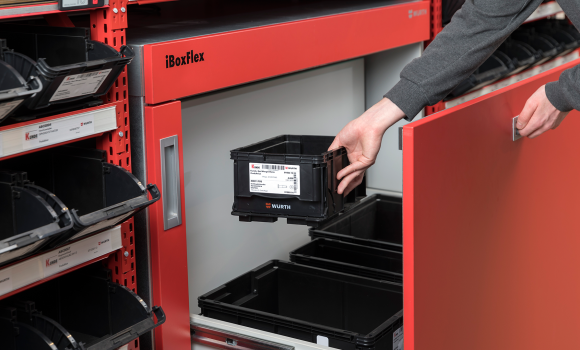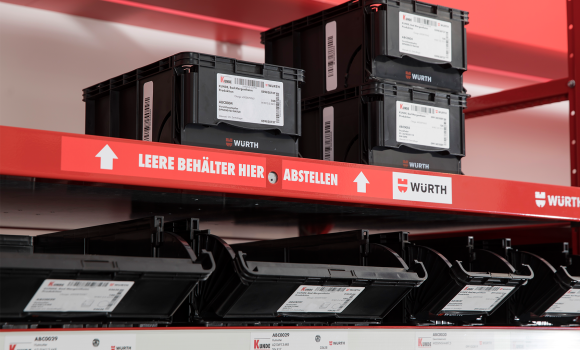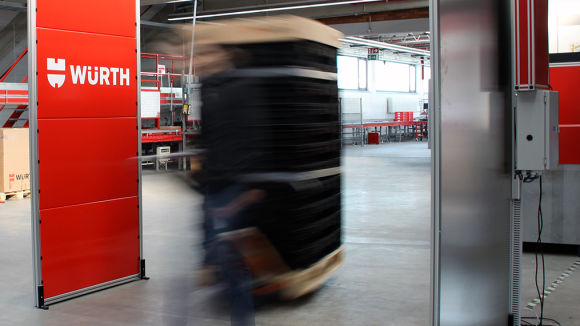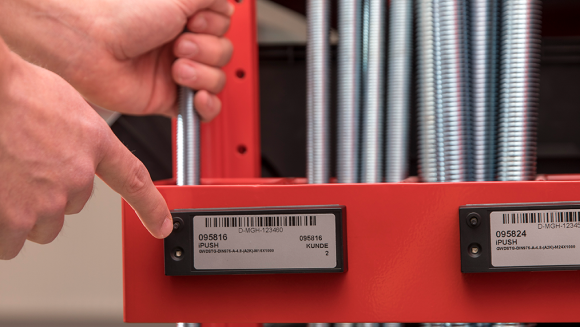
Faster, more transparent, more secure — radio frequency identification
Faster, more transparent, more secure — radio frequency identification
RFID Kanban: CPS®RFID for maximum supply security
Faster, more transparent, more secure — radio frequency identification, or RFID for short, is a firmly established system for managing the replenishment of production material in manufacturing industries and is a key building block within an efficient value chain. As a C-Parts system partner, we have used this technology within the industrial Kanban systems for lean inventory management, automated mapping of repeat orders and identification of fluctuations in demand at an early stage. The RFID Kanban systems therefore contribute to even higher supply security than the traditional Kanban processing.
CPS®RFID stands for...
- C-Parts solutions with radio frequency identification
- Radio transmission of the item and bin data directly from the customer's production facility to our central warehouse
- Early recognition of demand fluctuations
- Automated repeat orders without the need for scanning or manual entry
When you view and play embedded videos on www.wuerth-industrie.com, the provider (YouTube) may be able to store your access and analyze your behavior. If you activate the content, i.e. agree to view and play it, a cookie is placed on your computer to record that you have agreed to this in your browser. This cookie does not store any personal data.
For more information, please see our privacy policy and cookie page.
You can also use this link to access the video directly on the plattform of the provider: https://youtu.be/124SkuLTOt0
RFID Kanban Systems - Maximum security for your supply chain
The technique is explained quickly: The basis is an insensitive chip with antenna, referred to as a so-called RFID tag or RFID transponder, which is attached to the respective object, in the C-Parts area as a label on the Kanban bin, and is movable. Each tag is identifiable by a unique number for data security. An RFID system also consists of a reading device for detecting the transponder and the sending unit for data transmission or for the automated reordering of C-Parts for production. The essential distinction of the systems lies in passive or active RFID transponders.
While passive RFID transponders do not have their own power supply and gain the energy to send the data from the energy field generated by the reader, active transponders have their own energy source, for example battery, which initiates the data transfer.
We operate both systems, but mainly favors systems with passive RFID transponders, as these are maintenance-free. In addition, the integration of systems with passive transponders is seamlessly possible and no change in customer processes necessary.
Different RFID system solutions - Timing matters
Contact
We are here for you!
Contact us at T +43 5 08242-0 or by e-mail at industrieanfragen@wuerth.at.

The Würth Industrie Service GmbH & Co. KG collects and processes the personal data provided in the form in order to process the requested request for you. Please note the mandatory fields in the forms. The legal basis for this processing, the absolutely necessary data, is Art. 6 para. 1 lit. b DSGVO, implementation of a pre-contractual measure. The processing of data voluntarily provided by you is carried out on the basis of Art. 6 para. 1 lit. f DSGVO. Thereafter, processing is permissible which is necessary to safeguard our legitimate interests. Our legitimate interest is to have contact with you, our customers, to improve our consulting quality and to be able to contact you more easily in case of possible queries. The data collected will only be stored by us for as long as is necessary to process your enquiry and to contact you. They are then deleted.
Supplementary data protection information, in particular regarding your rights to information, correction, deletion, restriction of processing, objection and complaint, can be found in our data protection declaration.





